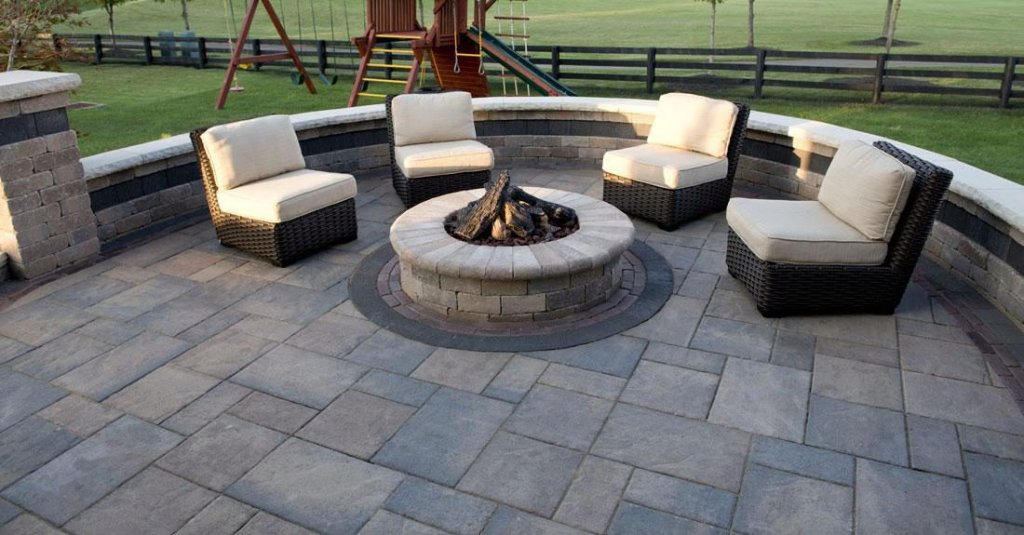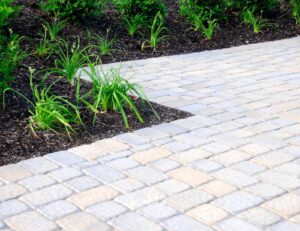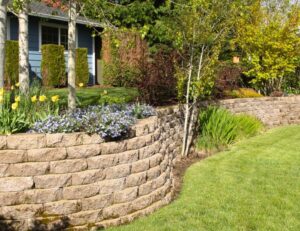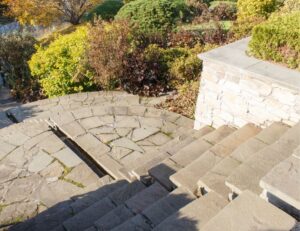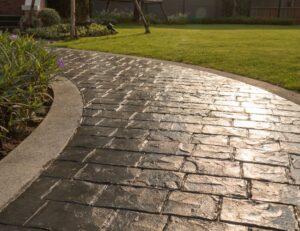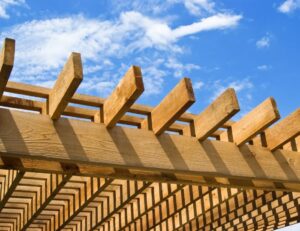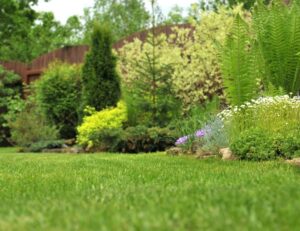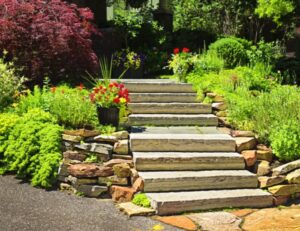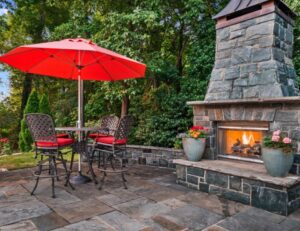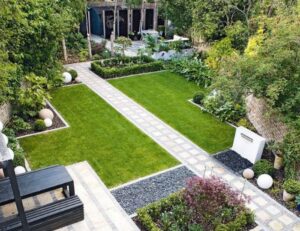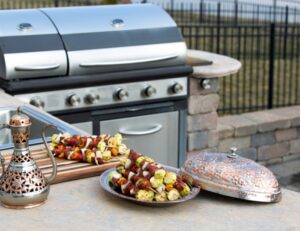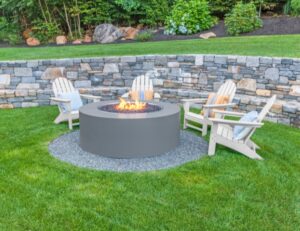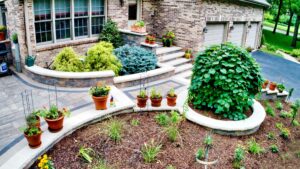When it comes to laying down Unilock pavers, professional landscapers know that there is more than meets the eye. First, you have to choose the right paver for your project, and then you have to determine how many of those particular pavers will be needed.
This can be tricky if you don’t know how big your job is going to be and what patterns will work best with your budget. Another thing that can trip up even experienced landscapers is trying to figure out exactly how much concrete they will need once they get started installing their Unilock pavers.
That’s why we’ve put together this handy guide so that anyone who wants a beautiful new patio or driveway doesn’t have any surprises when it comes time for installation day!
Selecting the Correct Unilock pavers for your project
There are a few different pavers to choose from in the Unilock line, each with its own unique characteristics. These are the things to consider when choosing:
- Size and shape: The size of the pavers is one of the most important considerations when deciding on the correct product for your project.
- Color & Composition: Choosing a color that compliments your house, landscape, and environment can be tricky. Plus, different paver compositions can have different colors and patterns.
- Functionality: Your pavers need to last, so choosing the right features can extend the life of your project and make maintenance easy.
- Laying Pattern: There are a few common laying patterns, so choosing one you like can limit your paver options.
1. Size and Shape
The first thing you will want to consider is the size and shape of your pavers. The size, or thickness, of your paver will determine how much material you will need for a project. You can find paver sizes ranging from 2-inches all the way up to 8-inches in width and in length up to 10 feet long!
Also important is the shape of your pavers. Unilock offers many different shapes including rectangles, squares, triangles and hexagons. For example if you were doing a brick pattern on your patio then you would use either square or rectangular pavers so that they matched up seamlessly across the surface area being covered by them. This means that if someone looked at one side from another side they wouldn’t be able to tell whether it was made out of bricks or made out of stone (or other materials).
This step is critical to the overall look and feel of your design. It can be a somewhat limiting step, as certain colors or patterns may require specific brick designs, but this is the most critical element of your paver project.
2. Color
A common misconception is that colored pavers are more expensive than natural stone or concrete pavers. The cost of colored paver materials is comparable to the cost of concrete, but the installation costs can be significantly higher due to labor. If you’re planning a large project, it’s best to think about color options early on so that your contractors have time to estimate installation costs accurately and factor them into their bids.
Colors can also help you match your house if you choose an identical shade for both projects (this may work in your favor when it comes time for resale). Darker colors like reds and browns tend to hide dirt better than lighter tones like blues and taupe; however, light colors will require less maintenance over time because they’re easier to clean up after rainstorms or other events that might get debris onto the patio surface.
However, if you want something easy-to-maintain with minimal upkeep required—a place where kids can play without worrying about stains ruining the appearance of their new backyard oasis—then consider taking advantage of lighter hues such as tan or grayish blue; these colors won’t show marks as easily as darker options such as red brick pavers do! On top of being easier on babysitters’ backsides while they maintain lawn duties throughout summer months (no one wants grass clippings flying off onto kid toys!)
It’ll take longer before needing repairs from wear & tear either way since dark coloration absorbs heat faster than lighter tones do which makes cracks appear sooner rather than later given enough exposure time spent outdoors during those sweltering summer days.”
3. Functionality
Different unilock bricks have different functional properties. The first major distinction is the brick production methods. Currently, there are 3 options: Thrumix, FaceMix, and Enduracolor.
Standard Thrumix:
Standard Thrumix is what most people think of when they hear “paving bricks”. They’re great for driveways and walkways—they’re strong enough to withstand heavy traffic and weathering, but they’re not too heavy to work with. If you need something that will last a very long time and look good doing it, Standard Thrumix is probably for you.
FaceMix:
FaceMix paving bricks have a smooth surface that makes them easy to clean and maintain. They won’t crack or chip like other types of paving materials might over time either—this makes them ideal for high-traffic areas like parking lots or sidewalks where people are constantly walking on them every day.
Enduracolor:
Enduracolor is an advanced technology that turns ordinary cement into a flexible material that can bend when it’s struck by something hard enough (like a car tire) without breaking apart completely
4. Laying Pattern
The next step is to decide which laying pattern will work best for your project. Laying patterns can be divided into three main groups: running bond, diamond bond and herringbone. Each of these has different uses and applications, so it’s important to understand the pros and cons of each one before deciding which one works best for you.
Running Bond:

Diamond Bond:
This pattern is often used for commercial applications because it’s less expensive to install than herringbone and can be laid out in any size or shape needed. The downside here is that diamond bond tends to create a rougher surface than running bond and other patterns do because all of the joints are placed vertically, creating lines of separation between each piece of pavers. This makes it easier for debris to get caught in between each joint and make cleaning more difficult than other patterns like herringbone or running bond do not require as much maintenance over time because there aren’t nearly as many joints/openings where debris could collect between each paver piece.
Herringbone Bond:
This pattern is often used for commercial applications because it’s less expensive to install than diamond bond and can be laid out in any size or shape needed. The downside here is that diamond bond tends to create a rougher surface than running bond and other patterns do because all of the joints are placed vertically, creating lines of separation between each piece of pavers.
Whichever pattern you decide, there are many techniques to placing and combining these into a lovely design for your space.
Working with a professional landscape designer will help you pick the best Unilock product for your next project, but having a few helpful tips under your belt before you begin will set you on the right path from day one.
In order to get the best results, it’s important to work with a professional landscape designer. An experienced landscape architect will help you pick the right Unilock product for your next project, but having a few helpful tips under your belt before you begin will set you on the right path from day one.
These professionals know all the details of these elements, as well as some design tips that can help you maximize your living space enjoyment and longevity.
Conclusion
Selecting the right pavers for your project can be a daunting and confusing task, especially if you don’t know where to start. Luckily, we are here to help! Our designers have worked with thousands of homeowners over the years, and we know what it takes to create a beautiful outdoor space that fits perfectly within your budget.
We believe that every person deserves their own unique piece of paradise — one without compromise. So if you are looking for professional advice from experts who truly care about making every customer happy while still saving money on their project, then contact us today!

